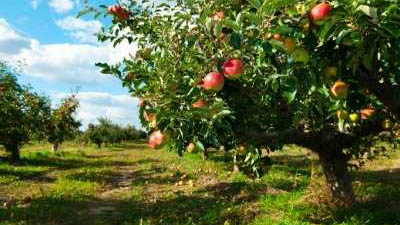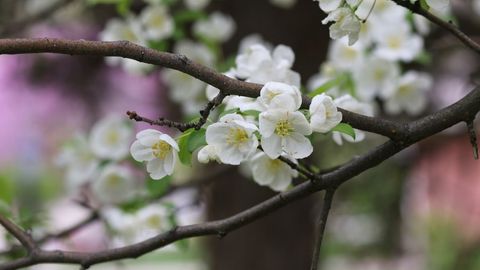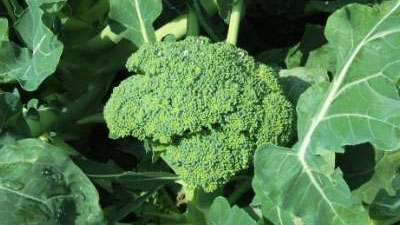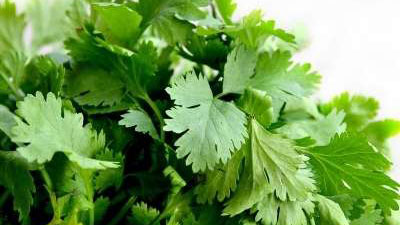How to Grow Calendula in Your Garden

Summary
Calendula, also called pot marigold, is an annual herb grown for its medicinal blooms, edible leaves and stems. It grows best in fertile, well drained soils from full sun to part shade. Calendula blooms throughout the season with yellow to orange blossoms that open and close with the sun. Calendula is easily grown from seed. Sow seeds in the spring planting ¼ inch deep and thin seedlings to 8 to12 inches apart after emergence. Plants grow 8 to 24 inches tall and require regular irrigation for best performance. Harvest flower heads when the plant reaches full bloom and use fresh or dried.
Recommended Calendula Varieties
There are 15 species in the Calendula genus with C. officinalis being the most popular. Cultivars are mostly ornamental selections with single or double blooms that vary in color from pale yellow to deep orange and have uniquely colored centers. ‘Coronet’ and ‘Pacific Beauty’ exhibit increased heat tolerance. The ‘Touch of Red’ series features double flowers, with red petal edges, and the ‘Kabouana’ series has dark centers. ‘Resina’ and ‘Erfurter Orangefarbige’ have high resin content in the blooms.
How to Grow Calendula
Soils
Calendula prefers well drained, moderately nutrient rich soils with a pH of 6-7 but can survive in a wide range of soil types. Most soils in Utah are suitable for calendula.
Soil Preparation
Before planting, determine fertilizer needs with a soil test and then follow the test report recommendations. If fertilizer applications are warranted, work the fertilizer into the top 6 inches of soil. If you fertilize with compost, apply no more than 1 inch of well-composted organic matter per 100 square feet of garden area.
Plants
Calendula can be grown by transplants or seed. Seeds germinate readily. Plant seeds ¼ inch deep when soil temperatures reach 60°F. Seeds germinate in 1-2 weeks. Transplants are available at many garden centers, often grown as ornamental annuals. Plant transplants after danger of frost has past.
Planting and Spacing
After emergence, thin seedlings to 8 to 12 inches apart in the row. Calendula prefers cooler temperatures (< 85°F) and often stops blooming in extreme heat. Plants will survive temperature down to 25°F. Removal of the old flowers (deadheading) will encourage re-bloom.
Water
Routine watering is advisable, but calendula can survive in low water conditions. Avoid overwatering. Supply 1 to 1½ inches of water per week in mid-summer for optimal growth.
Fertilization
Calendula needs little additional fertilization. Side dress plants every month with a complete soluble fertilizer to insure optimal growth and constant bloom development.
Problems with Growing Calendula
Weeds
Manage weeds by cultivation or hand pulling. Avoid damaging the plant roots during cultivation. Mulches also effectively control weeds. Calendula self-seeds readily if not deadheaded and may become weedy in the garden.
Pests and Disease
Calendula is often planted as a companion plant around tomatoes and potatoes to help deter insect pests.
Insect |
Identification |
Control |
|---|---|---|
| Whiteflies | Small white flies that hide and feed on the underside of leaves. | These insects are easily controlled by a hard stream of water or by regular applications of insecticidal soap. |
| Aphids | Green or black soft bodies insects that feed on the underside of the leaves. Aphids produce honeydew and cause crinkled or curled leaves. | These insects are easily controlled by a hard stream of water or by regular applications of insecticidal soap. |
Disease |
Symptom |
Control |
| Powdery mildew | White fungal patches on leaves that can spread to all the plants. Associated with cool, wet weather conditions. | Insure good air circulation, control irrigation and remove infested plant parts. |
How to Harvest and Store Calendula
To harvest flowers, pick the complete flower at full bloom. Petals can be removed for culinary use. Blooms can be harvested multiple times in a season. Plants will re-bloom in about 2 weeks. Collect seeds when fully mature and dry.
Drying
Dry the blooms in a well ventilated area, away from sunlight. A food dryer can also work effectively. Flowers should dry in 1 to 5 days.
Storage
Store blooms in a moisture tight container in a cool, dark place.
Productivity
Calendula has a high productivity rate. A 60 foot row of calendula will produce 1 pound of dried flower heads.
Uses
Ornamental uses of calendula include cut flowers and as border annuals. Culinary uses include the use of petals, stems, and leaves. Petals can add color to dessert and salads, and have a slightly salty taste. Calendula is often used as a saffron substitute, but contributes the color more than the flavor. The flower head is bitter and resinous and used more for medicinal purposes. It is reported to be antiseptic, antifungal, anti-inflammatory, and can help aid digestion and skin aliments. This plant is non-toxic and is safe for any use.
Additional Resources
- Mindy Grace. Calendula. Keats Publishing, 1998. Lesly Bremness.
- Smithsonian Handbooks: Herbs. Dorling Kindersly Inc., 2002.
Utah State University Extension
Peer-reviewed fact sheet
Download PDF
Authors
Liz Braithwaite and Dan Drost
Related Research







